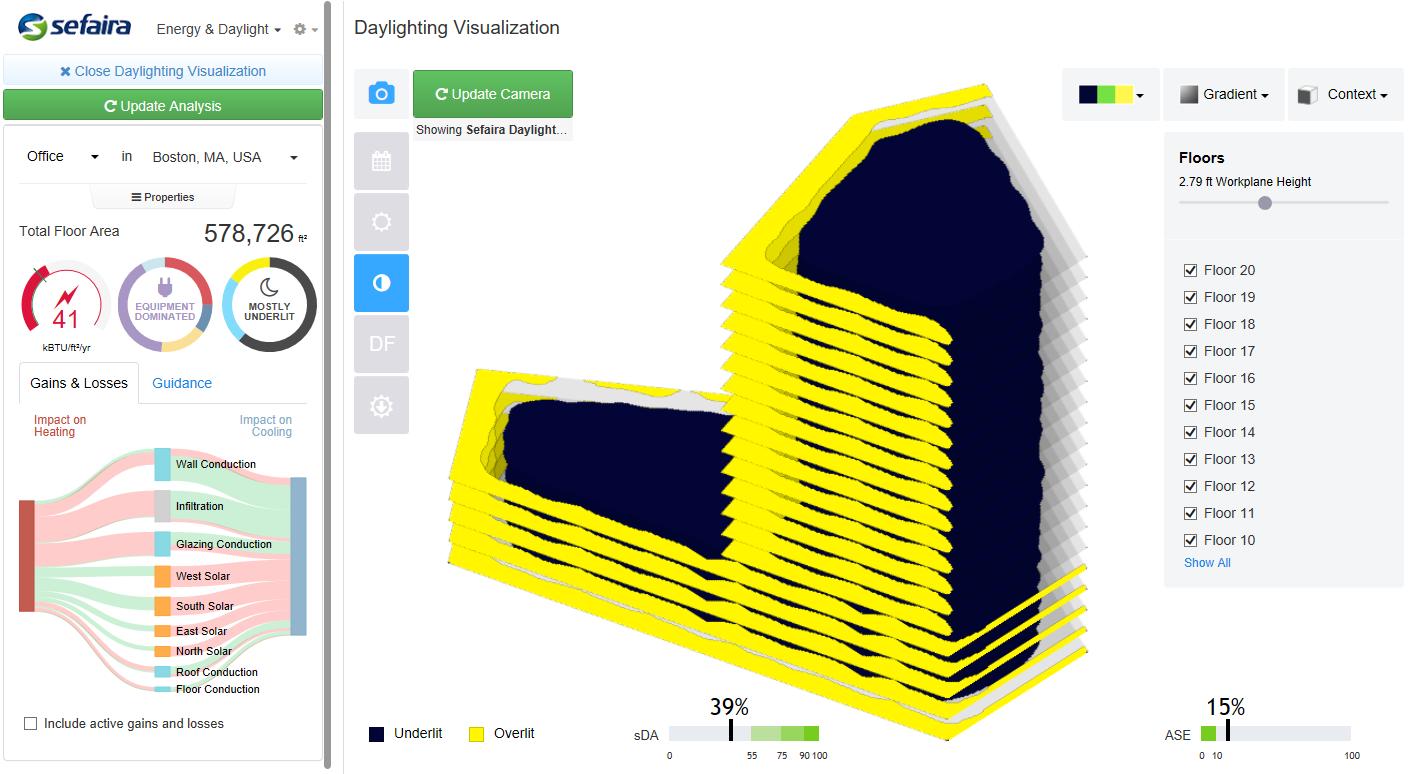This research project, led by Dr. Ajla Aksamija, investigates how to integrate parametric design methods with building performance analysis procedures for whole building design. High-performance buildings require the use of performance simulations and modeling from early conceptual design, since the impact of design decisions must be understood and evaluated. On the other hand, parametric design methods offer improved ways for exploring building forms, geometric properties, and modeling strategies.The primary benefit of integrating performance-based design with parametric modeling is that multiple iterations and design scenarios can be investigated, thus improving the efficiency of the design process, and reducing the time necessary for investigating impacts of various design decisions on building performance.
In this research, an ideal framework for integration of parametric and performance analysis procedures was developed. Then, the framework was tested using existing software applications, including building information modeling (BIM), non-BIM, parametric design and building performance analysis applications. Current software workflows that integrate some form of building performance simulations with parametric modelling include Rhino 3D (non-BIM), Revit (BIM), and SketchUp (non-BIM). Revit and Rhino each have visual programming plugins to aid in the creation of parametric forms. In this research, three different workflows were tested, which integrate building performance analysis applications. Specifically, Honeybee and Ladybug (for Rhino 3D), Insight 360 (for Revit) and Sefaira (for Revit) were evaluated.
A case study building was used to test and evaluate the workflows, interoperability, modeling strategies and results. Three different building performance aspects were analyzed for each workflow: 1) energy modeling, 2) solar radiation analysis, and 3) daylighting. For energy modeling, parametric control of window-to-wall (WTW) ratio, thermal resistance of exterior walls and roof, HVAC system types, infiltration and lighting power density (LPD) was tested. Energy Usage Intensity (EUI) was used as a performance benchmark to compare results of investigated scenarios. For solar radiation analysis, average, cumulative and peak insolation values were calculated for building’s exterior surfaces, where the effects of the adjacent buildings were taken into account. For daylighting analysis, parametric control of analysis period, sky type, rendering parameters and simulation type (illuminance, radiation, luminance) were tested.
The attached images show BIM model of the investigated case study building within the surrounding urban context, and results from Sefaira (energy modeling results and daylight analysis).
The results of this research were presented at the Biodigital Conference 2017 in Barcelona, and will be presented at the upcoming 2018 ARCC-EAAE International Conference in Philadelphia, May 16-19.
Gallery
Trimble Tech Used:
- Sefaira Architecture
People Involved:
- Ajla Aksamija, PhD, LEED AP BD+C, CDT, Department of Architecture



